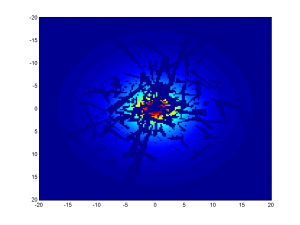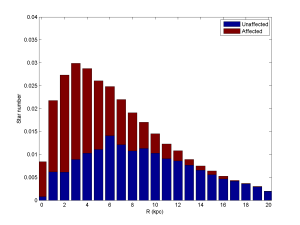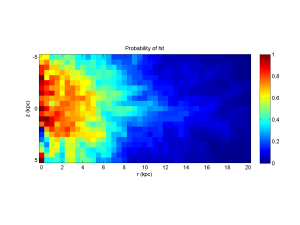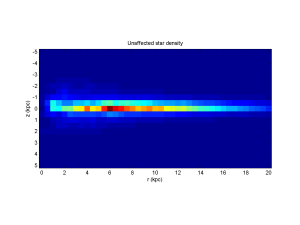How much does gamma ray bursts (GRBs) produce a “galactic habitable zone”? Recently the preprint “On the role of GRBs on life extinction in the Universe” by Piran and Jimenez has made the rounds, arguing that we are near (in fact, inside) the inner edge of the zone due to plentiful GRBs causing mass extinctions too often for intelligence to arise.
This is somewhat similar to James Annis and Milan Cirkovic’s phase transition argument, where a declining rate of supernovae and GRBs causes global temporal synchronization of the emergence of intelligence. However, that argument has a problem: energetic explosions are random, and the difference in extinctions between lucky and unlucky parts of the galaxy can be large – intelligence might well erupt in a lucky corner long before the rest of the galaxy is ready.
I suspect the same problem is true for the Piran and Jimenez paper, but spatially. GRBs are believed to be highly directional, with beams typically a few degrees across. If we have random GRBs with narrow beams, how much of the center of the galaxy do they miss?
I made a simple model of the galaxy, with a thin disk, thick disk and bar population. The model used cubical cells 250 parsec long; somewhat crude, but likely good enough. Sampling random points based on star density, I generated GRBs. Based on Frail et al. 2001 I gave them lognormal energies and power-law distributed jet angles, directed randomly. Like Piran and Jimenez I assumed that if the fluence was above 100 kJ/m^2 it would be extinction level. The rate of GRBs in the Milky Way is uncertain, but a high estimate seems to be one every 100,000 years. Running 1000 GRBs would hence correspond to 100 million years.

If we look at the galactic plane we find that the variability close to the galactic centre is big: there are plenty of lucky regions with many stars.


When integrating around the entire galaxy to get a measure of risk at different radii and altitudes shows a rather messy structure:

One interesting finding is that the most dangerous place may be above the galactic plane along the axis: while few GRBs happen there, those in the disk and bar can reach there (the chance of being inside a double cone is independent of distance to the center, but along the axis one is within reach for the maximum number of GRBs).

Integrating the density of stars that are not affected as a function of radius and altitude shows that there is a mild galactic habitable zone hole within 4 kpc. That we are close to the peak is neat, but there is a significant number of stars very close to the center.
This is of course not a professional model; it is a slapdash Matlab script done in an evening to respond to some online debate. But I think it shows that directionality may matter a lot by increasing the variance of star fates. Nearby systems may be irradiated very differently, and merely averaging them will miss this.
If I understood Piran and Jimenez right they do not use directionality; instead they employ a scaled rate of observed GRBs, so they do not have to deal with the iffy issue of jet widths. This might be sound, but I suspect one should check the spatial statistics: correlations are tricky things (and were GRB axes even mildly aligned with the galactic axis the risk reduction would be huge). Another way of getting closer to their result is of course to bump up the number of GRBs: with enough, the centre of the galaxy will naturally be inhospitable. I did not do the same careful modelling of the link between metallicity and GRBs, nor the different sizes.
In any case, I suspect that GRBs are weak constraints on where life can persist and too erratic to act as a good answer to the Fermi question – even a mass extinction is forgotten within 10 million years.